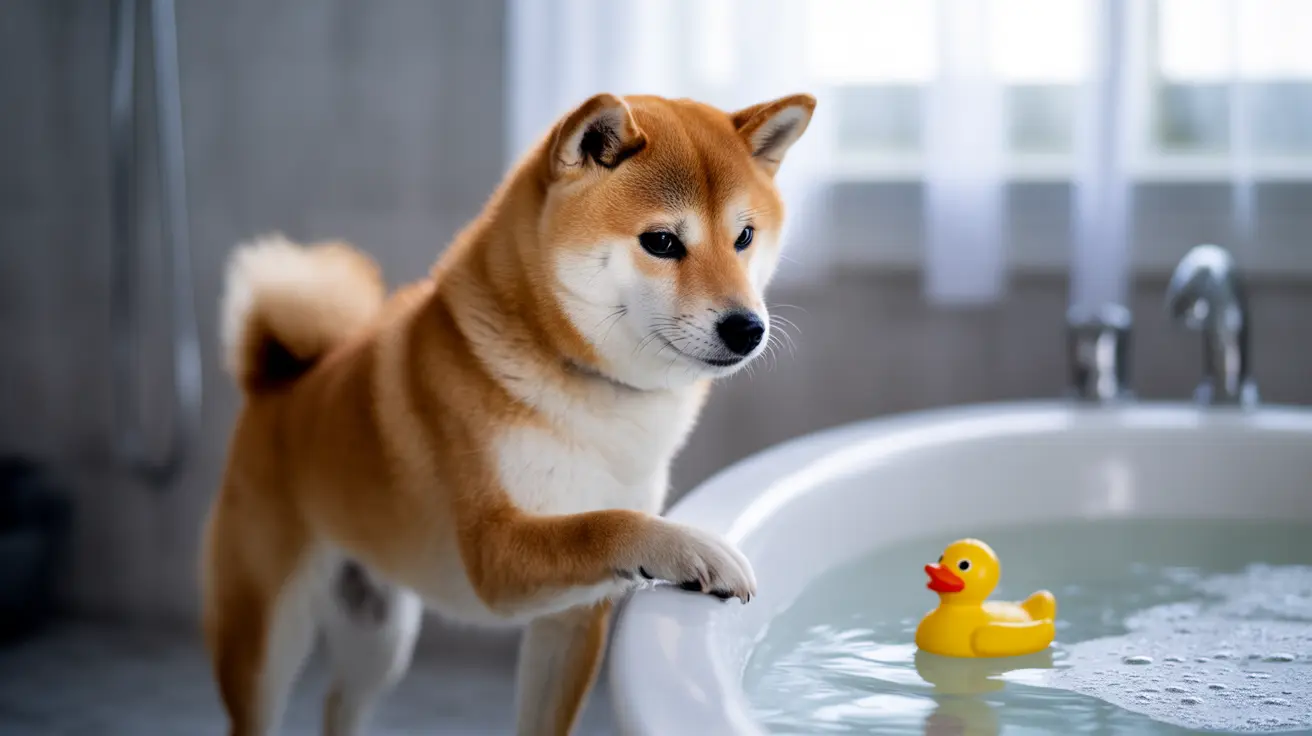If you've ever wondered why your water-loving dog suddenly turns into a reluctant participant during bath time, you're not alone. While many dogs happily splash in lakes and pools, the controlled environment of a bath can trigger very different reactions. Understanding why dogs hate baths is the first step to making the experience more pleasant for both you and your furry friend.
In this comprehensive guide, we'll explore the psychology behind bath time anxiety, identify common triggers, and provide practical solutions to help your dog feel more comfortable during grooming sessions.
The Psychology Behind Bath Aversion
Dogs' dislike of baths often stems from a complex mix of psychological and physical factors. Unlike voluntary swimming, baths represent a loss of control and autonomy. Your dog is placed in an unfamiliar situation where they can't easily escape, which can trigger their natural stress response.
Additionally, many dogs develop negative associations with baths due to past experiences. A single unpleasant incident – like getting soap in their eyes or slipping on a wet surface – can create lasting anxiety about bath time.
Sensory Overload: A Major Contributing Factor
The bathroom environment presents multiple sensory challenges for dogs:
- The echo of running water in enclosed spaces
- Strong scents from shampoos and cleaning products
- Unfamiliar tactile sensations from water spray and scrubbing
- Temperature fluctuations that can cause discomfort
- Slippery surfaces that threaten their stability
Physical Discomfort and Environmental Stress
Many dogs experience physical discomfort during baths that humans might not consider. The temperature that feels comfortable to us might be too warm for dogs, whose ideal bath water should be around 90-98°F. Slippery tub surfaces can cause muscle tension as dogs struggle to maintain their footing, adding to their stress.
Creating Positive Bath Time Experiences
Preparation Is Key
Before starting the bath:
- Place non-slip mats in and around the tub
- Gather all supplies within easy reach
- Pre-fill the tub to reduce noise
- Warm the bathroom to a comfortable temperature
Gentle Introduction Techniques
Transform bath time through positive association:
- Start with short, positive experiences in the bathroom
- Use high-value treats throughout the process
- Break the bath routine into manageable steps
- Allow your dog to enter the bathing area voluntarily when possible
Maintaining Comfort During the Bath
During the bathing process:
- Use lukewarm water and test the temperature frequently
- Keep water and shampoo away from your dog's face
- Speak calmly and reassuringly
- Offer frequent breaks and rewards
- Use a gentle touch when scrubbing and rinsing
Prevention and Long-term Solutions
Creating lasting positive associations with bath time requires consistency and patience. Regular, positive exposure to the bathroom environment, even on non-bath days, can help reduce anxiety. Consider professional guidance from a certified dog trainer if your pet shows severe bath-related stress.
Frequently Asked Questions
Why do dogs hate baths even if they love swimming?
Dogs typically hate baths but love swimming because swimming is voluntary and gives them control over the situation. Baths involve confinement, unfamiliar sensations, and forced handling, which can create anxiety even in water-loving dogs.
How can I make bath time less stressful for my dog?
Use non-slip mats, warm (not hot) water, positive reinforcement with treats, and gentle handling. Create a calm environment by pre-filling the tub to reduce noise and introducing bath time gradually with plenty of rewards.
What are the common signs that my dog is fearful or anxious during baths?
Look for signs like trembling, excessive panting, whale eye (showing whites of eyes), tucked tail, lip licking, yawning, or trying to escape. Some dogs may also refuse treats or show aggressive behavior when extremely stressed.
What is the best water temperature for bathing a dog?
The ideal bath water temperature for dogs is between 90-98°F (32-37°C), which is lukewarm to the touch. Test the water on your inner wrist to ensure it's not too hot or cold.
How can I prevent my dog from slipping and feeling uncomfortable in the tub?
Place non-slip mats in the tub and on the bathroom floor. Consider using a bath restraint or having someone help steady your dog. Keep sessions short to prevent fatigue from standing on slippery surfaces.
Conclusion
While many dogs naturally dislike baths, understanding the root causes of their aversion can help you create a more positive experience. With patience, proper preparation, and consistent positive reinforcement, you can help your dog learn to tolerate – and maybe even enjoy – bath time.






